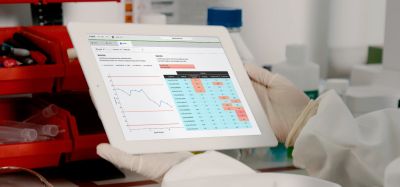The future of label management is with intelligent automation
Posted: 23 September 2020 | Julian Backhouse (IQVIA), Kiran Chinnalla (IQVIA) | No comments yet
Kiran Chinnalla and Julian Backhouse explain why automation for labelling in pharma can help the industry to remain compliant in the face of regulatory changes.


Meeting the labelling requirements of worldwide health authorities is at once an essential task and a continuously moving target for the pharmaceutical industry. Pharmaceutical companies must constantly navigate a plethora of changing standards across various countries, regions and health product categories and pivot to meet them in timely fashion.
Non-compliance in labelling is consistently costly, even as expectations evolve — often at a rapid pace — from over 150 global regulatory bodies. Failing to adapt to shifts in labelling requirements can result in serious consequences, such as potentially losing market authorisation or even worse, jeopardising patient safety.
The capability for automation in labelling now exists”
Pharmaceutical and medical device regulatory functions, including labelling, have been gradually shifting towards automation technology as compliance becomes a more significant administrative burden for companies. Today, the industry is approaching an era where artificial intelligence (AI) and machine learning (ML) will elevate traditional automation to intelligent automation, which can identify and understand more and share information across functional areas to further reduce the potential for human error. This type of automation has massive implications for the labelling function. Here are three ways that intelligent automation will impact product labelling.
Boosted speed and accuracy of compliance practices
The burden of the broader regulatory compliance landscape has been mounting for years. The US Food and Drug Administration (FDA) alone has implemented more than 2,000 new or modified regulations since 1998. The labelling function within this regulatory environment is not immune to the complexity and pressure this creates.


Implementing intelligent automation with AI or ML will enable labelers to simultaneously compare labels among any number of countries, react proactively to global regulatory needs and make adjustments before non-compliance becomes a possibility. This ensures product resilience amid a regulatory compliance landscape that is constantly in flux.
Support for a better patient experience
The major catalyst for automation adoption across operational areas is the promise to remove the need for human data processing”
Beyond the consequences of non-compliance, failure to properly label products could come with the high cost of endangering patients’ lives. In this sense, intelligent automation in labelling will act as a safeguard and facilitator for pharmaceutical and medical technology companies worldwide to keep their end users equipped with the most up-to-date and relevant safety information possible.
In the long term, intelligent automation in labelling will also contribute to the broader direction of the industry towards closing the gap between manufacturers and patients. In recent years, there has been a heightened emphasis from regulators such as the FDA on transparency1 with the general public about its inner-workings. Similarly, the industry is becoming more patient-centric to drive better health outcomes. Patients are more empowered in their healthcare journeys than ever before. As a result, intelligent label management can be leveraged as a tool to improve patient interactions and drive broader business goals beyond regulatory compliance.
More time for innovation


Pharmaceutical and medical device companies have long seen labelling and other compliance functions as a cost centre. The capability for automation in labelling now exists, as it does for other operational areas of life science business, but it is stunted by the absence of intelligence to further streamline data flow between parties. When that capability comes to fruition, early adopters will have the competitive advantage for maintaining compliance and driving business value as a direct result of their investments.
About the authors




References
- Woodcock J. FDA Continues to Support Transparency and Collaboration in Drug Approval Process as the Clinical Data Summary Pilot Concludes [internet]. Silver Spring: US Food and Drug Administration; 2020 Mar [cited 2020 Aug 10]. Available from: https://www.fda.gov/news-events…
Related topics
Artificial Intelligence, Labelling, Legal, Packaging, Production, Technology









